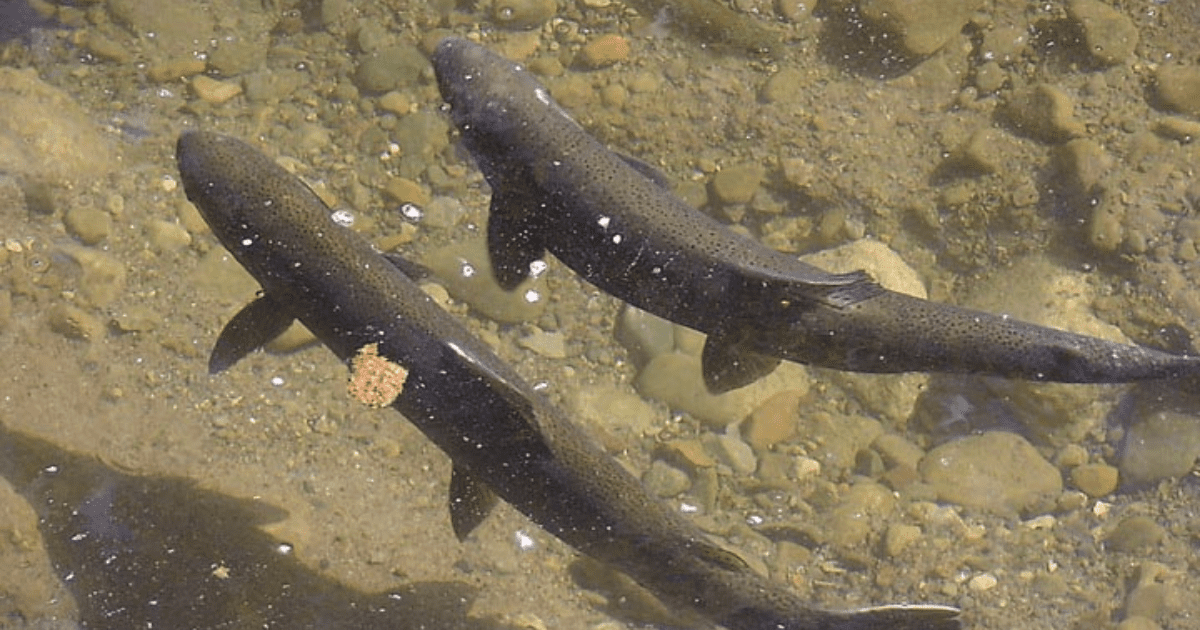Trout Clout: Protections Needed for Southern Steelhead
Southern California steelhead are on the brink of extinction.
In the past 25 years, only 177 adult Southern steelhead were documented in their native range. This is a dire contrast when compared to historical runs in the 10,000s throughout major Southern California rivers. California Trout is currently leading the effort to this list this native fish (Oncorhynchus mykiss) as endangered under the California Endangered Species Act (CESA). The CESA listing will expand the scope and scale of watershed restoration work.
During the February 2022 California Fish and Game Commission (FGC) meeting, the Commission heard presentations from scientists with CDFW — who evaluated and affirmed the science supporting the Southern steelhead CESA petition — and from CalTrout’s South Coast Regional Director, Dr. Sandra Jacobson. Following the presentations, CDFW Fisheries Branch concluded that the petition contained sufficient scientific merit to warrant action by the Commission. The Commission also received comments from stakeholders on whether to advance the CalTrout-led petition to list Southern steelhead through CESA. If advanced, the FGC would require CDFW to complete a year-long status review of the species. During the status review period, Southern steelhead would be considered a “candidate species” and thus would receive the full protections of a listed endangered species during that time.
In discussion, the Commission acknowledged that the scientific rationale of the petition is sound and the threat of extinction is apparent. However, the Commission decided to defer advancing the petition to the full status review period by CDFW until the next Commission meeting, and they closed the public comment record.
“Take” Allowances
Several public entities requested that they receive “take allowances” during the status review under Fish and Game Code 2084.
Since 1997, Southern steelhead have been federally listed as endangered under the Endangered Species Act (ESA). To comply with the ESA, any activities that result in “take” are illegal. “Take” is defined as “harass, harm, pursue, hunt, shoot, wound, kill, trap, capture, or collect, or to attempt to engage in any such conduct.” To comply with this law, all entities must apply for and receive an Incidental Take Permit (ITP) to ensure their activities will not contribute to extinction of the species. Under CESA law, existing federal ITPs for ”take” would not immediately apply. Instead, under CESA, some activities could now have potential “take” of Southern steelhead and face legal challenges and fines.
FGC uses the request for 2084 “take allowance” as a mechanism for having CDFW determine if the existing ITPs are acceptable to the state — and whether these activities may continue during the status review period. On April 21st, 2022, the FGC will consider and potentially act on the CalTrout-led Southern steelhead listing petition in addition to considering 2084 regulatory action to allow “take.”
This delay strategy is repeatedly used by certain parties who oppose the CESA listing. We have seen it time and time again specifically to avoid finalizing incidental take permits and conservation plans, thereby failing to meet their obligations to protect the species under the federal ESA while continuing to operate their facilities.
Southern California steelhead are an iconic California species that needs full protection. CalTrout is committed to balancing the needs of fish, water, and people, and we recognize this listing as an opportunity to create this balance. Protections required through the CESA listing will promote modernizing infrastructure to enhance flood protection, water supply reliability, and community climate resilience planning while simultaneously preserving the persistence of this imperiled species on the brink of extinction.
How You Can Help
We need your continued interested and involvement in the steps towards listing and protecting Southern steelhead under CESA. Please join the upcoming FGC meeting on Thursday, April 21 (online or in person).
View the FGC meeting agenda here.
Instructions to join the meeting through Zoom will be posted here soon.
We look forward to seeing you virtually this Thursday as we all show up to support the further protection of native Southern California steelhead.
Cover photo by Mark Capelli.






2 Comments
I really wish that you would produce both sides of the story. I’m not a sheep to be blindly led to the slaughter to satisfy your desires. Balancing acts require balance and full disclosure.
Hi John, glad you reached out. We certainly understand the need of balance in all the work and projects we do. For this issue of the Southern steelhead potential CESA listing, we don’t agree that there is another side to the story here. Listing the species as endangered will lead to healthier fish and healthier watersheds which greatly benefits California communities. Don’t believe that choosing to continue to slaughter (stealing that choice word from you) our wildlife and environment could be considered another side.
As always, you are free to contact us by phone or email if you would like more information on our projects and work. Our “desires” are not rooted in greed. We hope to create a better California for the people now and for future generations.
– Alisan Amrhein, CalTrout’s Senior Communications Manager